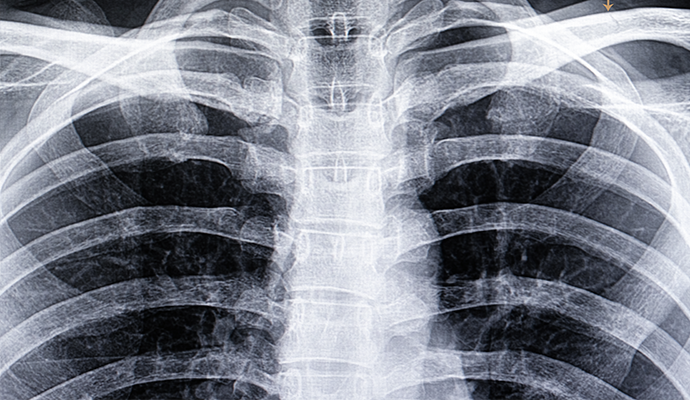DL Tool Triages Chest Pain Patients, Predicts Adverse Outcomes
The deep-learning model utilizes chest X-rays to identify individuals among acute chest pain patients who need immediate medical attention.

Source: Getty Images
- A new study published this week in Radiology shows that a deep-learning (DL) model may help improve care for patients who arrive at the hospital with acute chest pain.
According to the news release, acute chest pain syndrome is one of the most common complaints during emergency department (ED) visits, with more than 7 million ED visits spurred by the condition each year in the US. Acute chest pain syndrome may manifest as tightness, burning, or other discomforts in the chest; severe pain that spreads to the patient’s back, neck, shoulders, arms, or jaw; or shortness of breath.
The press release further states that fewer than 8 percent of patients presenting with acute chest pain syndrome are diagnosed with one of the condition’s three major cardiovascular causes: acute coronary syndrome, pulmonary embolism, or aortic dissection. However, because these conditions are potentially life-threatening and clinical tests used to detect and diagnose acute chest pain syndrome have low specificity, cardiovascular and pulmonary diagnostic imaging are used to assess patients and identify who may be at risk of adverse outcomes.
These tests often yield negative results, creating inefficiencies in triaging chest pain patients. To streamline this process, researchers trained a DL model to identify patterns associated with acute chest pain syndrome-related adverse outcomes.
“To the best of our knowledge, our deep learning AI model is the first to utilize chest X-rays to identify individuals among acute chest pain patients who need immediate medical attention,” said the study’s lead author, Márton Kolossváry, MD, PhD, radiology research fellow at Massachusetts General Hospital (MGH), in the news release.
Effectively triaging chest pain patients at low risk of adverse outcomes is key to decreasing the burden on EDs already struggling with high patient numbers and a shortage of hospital beds, the release explains.
To address this, the researchers developed an open-source DL model to identify patients with acute chest pain syndrome who were at risk for 30-day acute coronary syndrome, pulmonary embolism, aortic dissection, or all-cause mortality based on chest X-rays.
The model was trained on data from 23,005 patients from MGH. EHRs were collected for patients with acute chest pain syndrome who had a chest X-ray, additional cardiovascular or pulmonary imaging, or stress tests at MGH or Brigham and Women’s Hospital in Boston between January 2005 and December 2015.
The tool significantly improved the prediction of acute chest pain syndrome-related adverse outcomes beyond age, sex, and conventional clinical markers, such as d-dimer blood tests, while also maintaining its diagnostic accuracy across age, sex, ethnicity, and race, the researchers found.
Overall, the model helped defer additional testing in 14 percent of patients compared to 2 percent when using a model only incorporating age, sex, and biomarker data.
“Analyzing the initial chest X-ray of these patients using our automated deep learning model, we were able to provide more accurate predictions regarding patient outcomes as compared to a model that uses age, sex, troponin or d-dimer information,” Kolossváry said. “Our results show that chest X-rays could be used to help triage chest pain patients in the emergency department.”
The researchers suggested that in the future, such an automated model may be able to analyze chest X-rays helping to identify patients who would benefit most from immediate medical attention and those who could be safely discharged from the ED.
